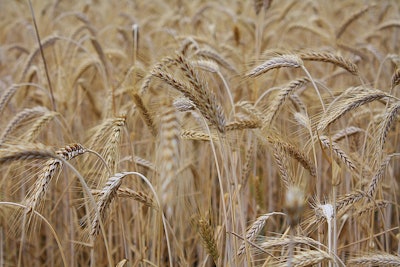
The U.S. Department of Agriculture (USDA) Foreign Agricultural Service (FAS) reported that during the week of April 26 to May 2, 2024, the U.S. saw varied trends in agricultural exports, with significant activity in wheat, corn and soy markets, according to recent exporter reports.
Wheat exports experienced a mixed week, with net sales of 41,100 metric tons for the 2023/2024 marketing year, showing a decrease from the previous week but an increase from the past four-week average. Notable purchases were made by South Korea, Brazil, and the Philippines, while reductions were reported for China and other undisclosed destinations. Looking ahead to 2024/2025, substantial commitments were made, particularly by Mexico and Panama, totaling 406,000 metric tons.
Corn showed robust sales of 889,200 metric tons for 2023/2024, marking a 17% increase from the previous week and 23% from the prior four-week average. Japan and Mexico led the purchases, which included significant swaps from undisclosed locations. The week also saw an uptick in corn exports, though they were down 11% from the prior week.
Sorghum sales surged to 61,500 metric tons for 2023/2024, primarily driven by demand from China. This represents a noticeable increase from both the previous week and the four-week average. Sorghum exports also saw a significant jump, primarily destined for China.
Rice sales dramatically declined, dropping 86% from the previous week to just 8,300 metric tons, with notable reductions for South Korea. The export figures also fell sharply, signaling a slow week for rice shipments.
Soybeans and soy-based products saw mixed results. Soybean net sales were 428,900 metric tons for 2023/2024, a slight increase from the previous week, with significant transactions involving Egypt, Turkey, and Algeria. Soybean meal and oil also reported healthy sales, especially in markets like Saudi Arabia and Jamaica.
Cotton reported strong sales, with net sales of Upland cotton at 253,700 running bales for 2023/2024, predominantly to China and Pakistan. Pima cotton sales were modest in comparison but showed an upward trend from the previous week.
Hides, Skins, and Wet Blues transactions varied, with net sales of 258,600 pieces of hides and skins and 84,100 wet blues, mainly to markets in Asia.
Meat Exports remained steady, with beef and pork showing fluctuations in their sales and export volumes. Beef sales decreased compared to the previous week, while pork sales also saw a decline.
This weekly summary provides a snapshot of the U.S. agricultural export performance, highlighting the fluctuations and trends across various commodities essential for global trade.